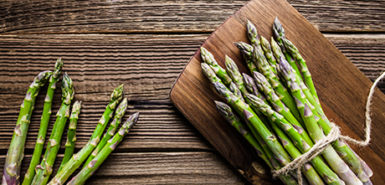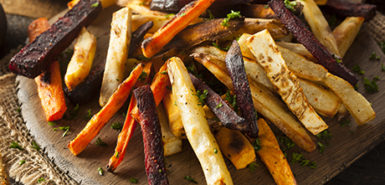
People are often seeking to up their nutrition game, looking for new ways to maximize their health.
In the world of whole plant foods, there are endless options to incorporate a variety of nutrients into our diet.
But many times, people get stuck eating the same common foods throughout the week, which inevitably limits their nutrients and culinary variety.
Here are the Top 10 nutrient power foods that many people have never tried:
1. Seaweed—greens from marines
Most popular in southeast Asia, seaweed consumption has been linked to lower rates of cancer, lower cholesterol, improved digestive health, reduced inflammation and reduced rates of coronary heart disease.
The Okinawans in Japan enjoy the longest life expectancy in the world—and they enjoy seaweed regularly.
Edible seaweed is high in fiber, protein, omega-3 fatty acids and minerals such as calcium, iron, copper, magnesium and iodine. Not all seaweeds are edible. Look for brown seaweeds (wakame, kombu, and hijiki), red seaweeds (nori or dulse) and green seaweeds (sea lettuce or spirulina and chlorella).
Use as garnishes, wraps, in salads or smoothies.
2. Teff
Not many people know about teff. As the smallest grain in the world, teff is hard enough to see. It originated in Ethiopia and it’s used to make their staple bread, injera.
It has more fiber than any other grain and it’s rich in iron, calcium and protein. It’s also a gluten-free option for those with celiac disease. Teff is thought to reduce the risk of esophageal cancer. Use it as a flour in baked goods or cook it as a hot cereal option.
3. Natto
Natto is made from fermented, cooked whole soybeans. Because of the fermentation, it has a sticky coating and cheesy or nutty flavor. Given the specific strain of bacteria used to ferment it, natto is the only vegetarian source of vitamin K2, which is essential for bone health.
The fermentation process also adds probiotics and makes it easier to digest. It is rich in fiber, protein, manganese, iron and isoflavones. It is typically found in Asian cultures as a breakfast food served over rice.
4. Okra
Another Ethiopian native, okra is commonly known for gumbo in the U.S. It has multiple uses, as the entire plant is edible.
Okra seeds are considered a complete protein with high essential amino acid content. They can also be roasted and ground as a coffee alternative. The viscous fiber and mucilage created when cooking okra pods can thicken soups or be used as an egg white or fat substitute in cooking. It can also lower cholesterol.
Okra pods contain high levels of vitamin C, folate, vitamin A and zinc. Okra has been found to improve kidney function, improve blood sugars, prevent gastric ulcers and improve colon health.
5. Fennel
Popular in southern European cooking, fennel provides a sweet aromatic anise flavor, offering all parts of the plant as an edible option. It has a white or pale green bulb with stalks of feathery green leaves and flowers with the fennel seeds.
Fennel provides fiber, folate, potassium and vitamin C, along with the phytonutrient anethole which can fight cancer and inflammation and relieve gas and stomach cramps. You can eat fennel raw in salads, or eat it roasted. You can also sauté the bulbs in sections with some olive oil and lemon, or mince the stalks to throw into salads, soups, pastas, or broths.
6. Jackfruit
Native to South Asia, the jackfruit is the national fruit of Bangladesh. It’s harvested from the jack tree and it’s the largest fruit of all fruit trees, growing as large as 20-50 pounds and 10-40 inches long.
Under the thick, bumpy rind, the stringy fruit flesh has a sweet, tropical fruit flavor when ripe, or has a more neutral flavor when unripe. Jackfruit is high in fiber, potassium and antioxidants. It can help fight inflammation.
Ripened jackfruit can be used like any fruit for snacking, or in smoothies. However, the unripe fruit (green jackfruit) can be used in more savory recipes. It’s a common meat alternative for pulled pork or chicken, because of its stringy texture. It can often be found canned or dried in the ethnic foods isle or Asian markets.
7. Jicama
Hailing from Mexico, jicama is a starchy root vegetable similar to a potato with a slightly sweeter flavor. This nutrient-dense tuber is rich in fiber (including the gut flora feeding fiber inulin) and vitamin C. It’s a low-glycemic carbohydrate for those with diabetes.
Only the root is safe to eat from this plant. It can be added to a Mexican fruit salad, on top of a salad for a crunch, or sautéed in with veggies or stir-fry.
8. Lupin (lupini) bean
Popular in the Mediterranean, lupin beans are great way to expand your bean horizons. These beans are a great source of complete plant-based protein, with the highest amount of all the beans at 26 grams per cup.
They are also the highest fiber-containing bean, rich in B vitamins, vitamin C, potassium, magnesium, iron and zinc. Traditional bitter lupini beans do contain toxic alkaloids that are minimized by either buying sweet lupin beans or soaking bitter lupin beans for one week and changing the water daily.
Both sweet and bitter (after soaking), lupin beans can be cooked or eaten raw as a snack with or without the skin.
9. Microgreens
Not to be confused with sprouts, microgreens are essentially baby plants. They are young vegetable greens that grow about 1-3 inches long with edible stems and leaves. They have a more concentrated aromatic flavor and nutrient content of the vegetable.
You can find a variety of microgreen plants raging from broccoli to radish or beet plants. They can be found at farmer’s markets, health food stores, or—as an easy and cost-effective solution—grown right at home.
Toss them in a salad, blend in a smoothie, or top any dish with some microgreens for a colorful power packed garnish.
10. Dandelion greens
Yes, the greens from the weeds growing in your lawn in the spring. It’s recommended, however, that you buy them from a farmers market or grocery store, because many lawns have chemicals sprayed on them.
The dandelion’s leaves have the best flavor—before the plant flowers, they offer a bitter, peppery taste. They can be used like any raw leafy green for salads or grilled or sauteed like spinach. They give a good dose of vitamin A, vitamin K and calcium, in addition to reducing inflammation.
 /a>
/a>
 /a>
/a>
 /a>
/a>